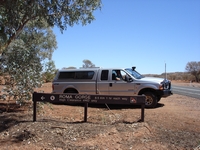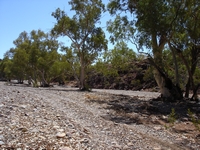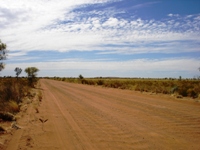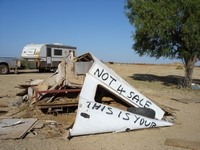Australia So Much to See


Off road and unsealed road travel
Off road usually refers to travel other than on maintained roads, rather than travelling where there are no roads at all as someone
out gold prospecting might do. These unmaintained roads are usually known as tracks. Many roads colloquially referred
to as tracks such as Tanami, Birdsville and Oodnadatta tracks are now in reality roads of adequate width and are periodically graded. Sometimes off road means anything other than a bitumen road and
Dust is common on
When travelling on long corrugated roads, travel slowly and periodically stop and check your rig. Check everything that can
comes loose or unscrewed each day. Check water tanks and delivery lines for stone damage.
Limiting factors for off
road and track travel include the size of your rig; height, length, turning circle, weight of rig on soft surfaces, and ground clearance
of tow vehicle and trailer. You may be limited by depth of water crossings, deep and steep valley crossings, deep ruts and washouts. Always check water crossing before entering as you cannot see what is underneath. There may be an optimum path for the vehicle,
with either side of it being much deeper. On flooded roads, a washed away culvert or road surface will not be visible. Do not walk across in areas where there is a danger of salt water crocodiles.
Reducing tyre pressures on both tow vehicle and trailer
is also necessary on roads with soft surfaces such as sand. This will give more traction and the tyres will not sink in so much
so an easier ride and less chance of becoming bogged. Lower tyre pressures are safer when travelling on sharps stone roads and
tracks. This is bit like popping a balloon – easy to do with a pin when fully inflated, but when the balloon has only a little
air the pin pushes the soft balloon in some way before it will pierce the balloon. Fear of sidewall damage to ballooning low
pressure tyres is somewhat unfounded, but it still can happen. Sidewall damage generally cannot be repaired.
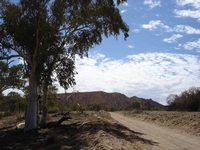
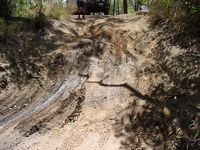
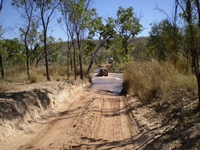
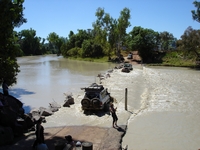
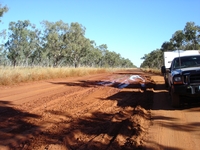
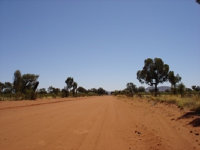
Do not travel on clay surfaced dirt roads after rain, as wheels can sink in leaving deep ruts which are difficult if not impossible
to grade out and these ruts may remain for many years making travel difficult for others. Large fines can apply for travelling
on a road which has been closed due to rain, aside from the risk of becoming bogged and/or becoming stranded.
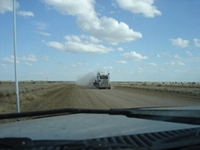
When travelling in remote areas, particularly with a trailer, the cost of recovery in case of a breakdown can exceed $10,000. Consider the risk before you go. Also ensure you have adequate communications, fuel water and food if travelling in remote regions. Fuel consumption will be much higher than usual on soft surfaces and tracks where the going is slow and low gears are being used.
